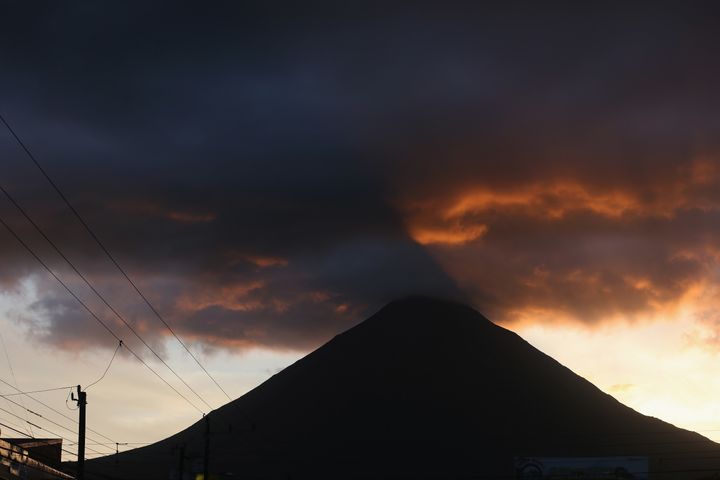
Costa Rica is the Central American country known for its extraordinary biodiversity (over half a million different species of plants and animals call it home) and stunning landscapes (you’ll find everything from volcanoes to waterfalls to pristine stretches of sandy beaches there).
It’s the place to visit to interact with rare wildlife, where sloths, sea turtles and monkeys abound. Costa Rica is also a thrill-seeker’s paradise, where you can raft, snorkel and cliff dive to your heart’s content.
It’s also the country that can teach the rest of the world a thing or two about living the green life.
Costa Rica recently topped the Happy Planet Index for the third time, making it the happiest and most sustainable country on Earth. What’s more, Costa Rica’s inhabitants have a higher life expectancy than those in the US.
And guess what? Turns out, happiness isn’t connected to who’s using the most resources or pillaging the environment. In fact, Costa Rica uses roughly a quarter of the resources typically used in the Western world, according to the World Economic Forum.
In summer 2016, Costa Rica ran solely on 100% renewable energy for 76 straight days, from June 16 to September 2, according to the Costa Rica Electricity Institute (ICE). That’s right: the country didn’t use a single fossil fuel in that time, not burning any gas, coal or oil to power itself.
This isn’t the first time the country has run entirely on hydro-power, wind, solar and geothermal energy. In fact, Costa Rica has run exclusively on renewable energy for a total of 299 days over the past couple of years.
By 2021, the country plans to be completely carbon neutral, and considering the country was already using 99% renewable energy in 2015 (according to the Costa Rican government), that ambitious goal seems to be within reach. Hydropower supplies 80% of the country’s energy needs - thank goodness for all of those breathtaking waterfalls.
But that’s only a slice of what the country has up its sleeve when it comes to sustainability: the country recently unveiled its 305.5-MW Reventazon hydroelectric plant, which is expected to power over half a million homes and provide electricity to around one-third of the country’s inhabitants.
Costa Rica is also using its volcanoes to harness volcanic geothermal energy (the country recently approved the construction of three 50 MW geothermal power plants).
One of Costa Rica’s gems - and the world’s first carbon-neutral destination - is La Fortuna, an agricultural town that has become a must-visit spot for anyone interested in sustainable tourism.
La Fortuna boasts the famed Arenal volcano, as well as other natural splendour in the form of waterfalls, rainforests and hot springs. With sustainability at its core, La Fortuna has a range of eco-lodges and environmentally conscious hotels that don’t just tick the box of looking green - they actually are.
Local resorts attain carbon-neutral status, offset carbon footprints with tree-planting initiatives and use the Arenal volcano to heat water (instead of outsourcing to an artificial heating system).
Costa Rica has also committed itself to country-wide reforestation projects, while the country’s unconventional - and effective - choice to implement PES (payments for environmental services), encourages landowners to treat the environment in a way that benefits others, while rewarding them financially.
Costa Rica may have a population of less than five million people, but the country is consistently innovating when it comes to green living and sustainability, so much so that large countries around the world are being called to action to take lessons from this lush Central American country.
Is it just us or are you thinking about booking your next holiday there, too?